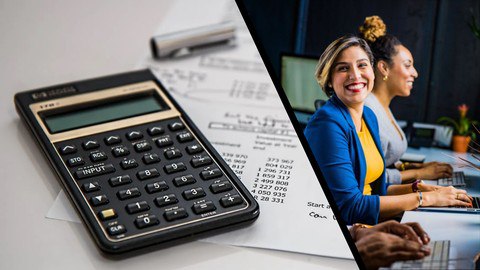Short Description
Including well over 100 hours of content, e-book (EPUB, MOBI, PDF) ,Excel worksheet, & PDF files, this is comprehensive
Description
Recently updated with A LOT of added content.
Includes downloadable e-book in multiple formats so you can open it on your tablet or Kindle – Formats (EPUB, MOBI, PDF).
This course is an excellent supplement for students or anybody who wants to learn accounting and also have something they can refer back to in the future. Udemy generally provides lifetime access to the course.
Many accounting students do not receive a physical book, they get to keep from their school, and even if they did, the information could become dated. Students who want a useful reference tool they can keep, and one that can be more easily updated then a textbook, will benefit from a resource such as this.
Financial accounting is a LARGE topic and is not something that can be done well in 5, 10, or 20, hours of content, as you may see claimed elsewhere. We will cover accounting theory because theory and concepts are what accounting is. We need to learn theory so we can make appropriate adjustments in the real world. Learning procedures without understanding the theory will make us inflexible and unable to adapt to the ever-changing environment. We will learn the theory while we apply them to procedures.
Financial accounting is relatively standardized in format. In other words, most accounting institutions will cover much the same topics, often in much the same order. We suggest looking up a standard accounting textbook, checking the index, and comparing the topics to the courses you are considering purchasing. We believe this course will line up well to anybody’s needs who want to learn financial accounting.
Below is a list of topics by section:
Section SEC 1 An Introduction to Accounting, The Double Entry Accounting System, & Recording Transactions using Debits and Credits
Section SEC 2 – Recording Period End Adjusting Entries
Section SEC 3 – Recording Closing Entries
Section SEC 4 – Merchandising Transactions – Transactions Involving Inventory
Section SEC 5 – Inventory Cost Flow Assumptions (FIFO, LIFO, Weighted Average Methods)
Section SEC 6 – Subsidiary Ledgers & Special Journals
Section SEC 7 – Bank Reconciliations & Cash Internal Controls
Section SEC 8 – Accounts Receivable – Allowance Method & Direct Write Off Methods
Section SEC 9 – Depreciation Methods & Property Plant & Equipment
Section SEC 10 – Payroll Accounting
Section SEC 11 – Partnership Accounting
Section SEC 12 – Accounting for Corporations
Section SEC 13 – Bonds Payable, Notes Payable, & Long-Term Liabilities
Section SEC 14 – Statement of Cash Flows
The course will start off at the basics and work all the way through the financial accounting topics generally covered in an undergraduate program.
First, we will describe what financial accounting is and the objectives of financial accounting. We will learn how the double-entry accounting system works by applying it to the accounting equation. In other words, we will use an accounting equation to record financial transactions using a double-entry accounting system.
We well learn all topics by fist having presentations and then applying the skills using Excel practice problems. If you are not familiar with how to navigate through Excel, it is OK. We will use preformatted worksheets, have step by step instructional videos, and will start off relatively slow.
The next step is to apply the double-entry accounting system using debits and credits. Debits and credits are a new concept to most people not familiar with accounting, or possibly worse, many people have misconceptions about the meaning of debit and credit due to its use in areas like bank statements, credit cards, and debit cards.
Checkout: Finance

